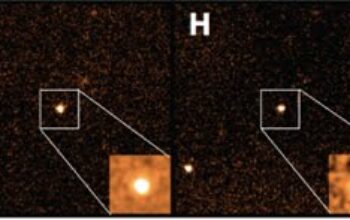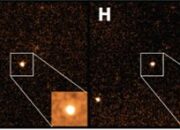In the burgeoning field of quantum computing, a profound paradigm shift is imminent, underpinned by the tantalizing capabilities of qubits in contrast to their classical counterparts, bits. As we venture into the intricacies of quantum mechanics, we unveil the crucial question: Why can qubits be more useful than bits? To answer this, we must delve into the fundamental characteristics of both bits and qubits, emphasizing their roles within the broader context of computational technology.
At the core of classical computing lies the bit, the fundamental unit of information represented by a binary state: either 0 or 1. These bits are the building blocks of classical algorithms and data structures, propelling the digital age forward with unprecedented efficiency. However, as we encounter increasingly complex problems, the limitations of classical bits become apparent. Their binary nature confines them to linear processing capabilities, which restricts performance, especially for tasks involving massive datasets or intricate computations.
Conversely, qubits, or quantum bits, operate under the principles of quantum mechanics, introducing a conceptual departure from traditional computing methodologies. A qubit possesses the extraordinary ability to exist in a state of superposition. This means that, unlike a bit which is definitively either 0 or 1, a qubit can represent both 0 and 1 simultaneously, albeit with varying probabilities. This particular property significantly augments computational capacity, allowing quantum computers to process vast amounts of data in parallel, a capability unattainable by classical machines.
Moreover, the phenomenon of entanglement enriches the functionality of qubits, establishing correlations between them that transcend classical limitations. When qubits are entangled, the state of one qubit is directly related to the state of another, regardless of the distance separating them. This interdependence results in an exponential increase in computational power as systems scale. Consequently, algorithms designed for quantum systems can solve complex problems, such as factorization of large numbers or optimization challenges, with unparalleled speed and efficiency.
The implications of qubit functionality extending beyond mere computational speed are profound. Quantum algorithms, such as Shor’s and Grover’s, demonstrate remarkable capabilities in factoring large integers and searching unsorted databases, respectively. Shor’s algorithm, which capitalizes on the properties of qubits, threatens the very foundation of current cryptographic systems. As quantum computers outperform classical ones in specific tasks, they herald an era of technological disruption, necessitating a re-evaluation of security protocols across digital platforms.
Furthermore, the adaptability of qubits to various quantum states fosters a new realm of possibilities within quantum simulations. These simulations can closely replicate multidimensional quantum systems, offering insights into realms often considered intractable through classical approaches. From material science to pharmaceuticals, the ability to model quantum interactions presents a transformative opportunity, driving innovation and discovering novel compounds with tailored properties.
However, the journey towards realizing the full potential of qubits is fraught with challenges. The delicate nature of quantum states, susceptible to decoherence and environmental interference, complicates the practical implementation of quantum systems. As researchers tread cautiously through this uncharted territory, advancements in error correction and qubit coherence times are imperative. Quantum error correction codes serve as a beacon of hope, allowing qubits to maintain their computational integrity amidst the discord of environmental noise.
Moreover, the pursuit of scalable quantum architectures is paramount. As we gradually transition from theoretical frameworks to practical applications, various physical implementations of qubits, including superconducting circuits, trapped ions, and photonic systems, play a pivotal role. Each technology presents unique advantages and trade-offs, stimulating ongoing research and experimentation within the quantum computing landscape.
The shift from bits to qubits also represents a conceptual evolution, inviting a re-examination of how we approach problems. Traditional algorithms emphasize deterministic solutions, grounded in classical logic. In stark contrast, quantum algorithms leverage probabilistic outcomes, harnessing the immense power of uncertainty inherent in quantum mechanics. This shift in paradigm compels researchers and practitioners alike to rethink algorithm design, fostering a culture of interdisciplinary collaboration that blends computer science, mathematics, and quantum physics.
As we traverse the frontier of quantum computing, it is imperative to acknowledge the ethical ramifications of this transformative technology. The advantages brought forth by qubits also raise questions about accessibility and equity. As quantum technology advances, ensuring equitable access to its capabilities becomes essential to prevent exacerbating the existing digital divide. Addressing the ethical considerations surrounding quantum computing will necessitate a collaborative effort across academia, industry, and policymakers to foster a responsible implementation of this revolutionary technology.
In conclusion, the assertion that qubits can outshine bits is not merely an academic observation but a clarion call to rethink our computational paradigms. The unique properties of qubits, such as superposition and entanglement, promise to unlock solutions to complex problems that have historically eluded classical computation. The journey toward harnessing this potential is not without its challenges, yet the pursuit fosters innovation and catalyzes collaboration across disciplines. As this paradigm unfolds, it invites us to reconsider not only the machines we build but also the foundational principles that govern computation itself. The horizon of quantum computing materializes, presenting us with an extraordinary opportunity to reshape the landscape of technology as we know it.










